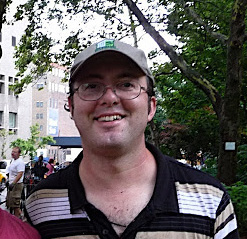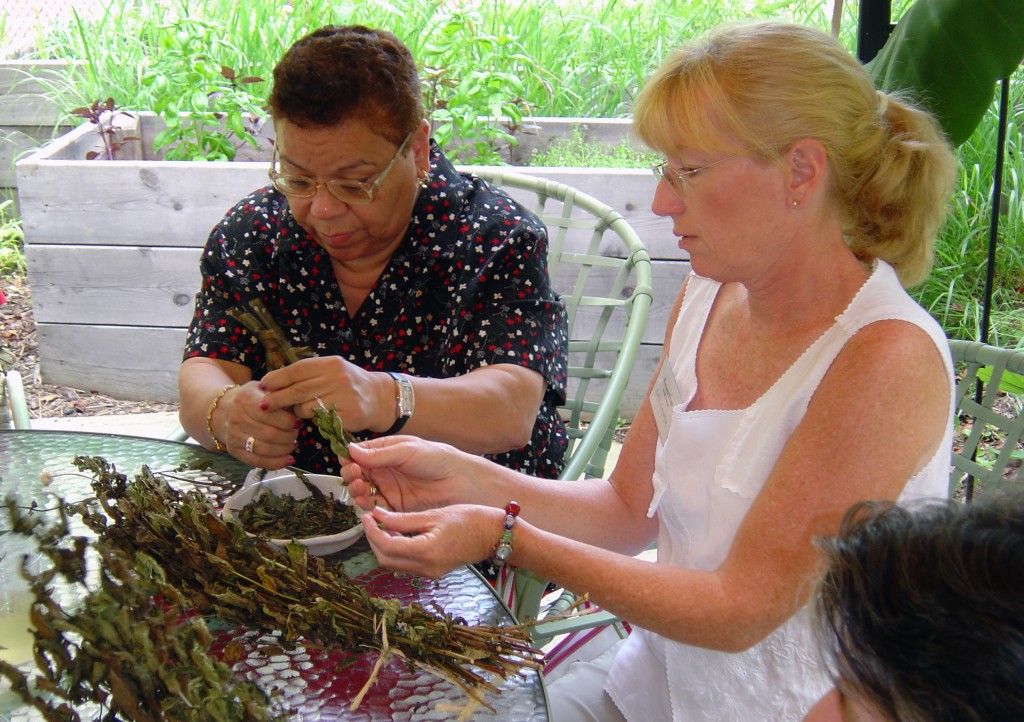Alum of the Month: Rob Bennaton
Posted in Adult Education on November 27 2013, by Lansing Moore
 Most people think of gardening as a solitary activity, but Horticultural Therapy is a unique profession because it turns plant care into an opportunity for human interaction. It was that human element that brought plantsman Rob Bennaton back to The New York Botanical Garden to pursue a Certificate in Horticultural Therapy. With a previous NYBG Horticulture Certificate and 18 years’ worth of experience in community development and habitat restoration under his belt, Rob told us why he returned to study the therapeutic effects of plant care on people.
Most people think of gardening as a solitary activity, but Horticultural Therapy is a unique profession because it turns plant care into an opportunity for human interaction. It was that human element that brought plantsman Rob Bennaton back to The New York Botanical Garden to pursue a Certificate in Horticultural Therapy. With a previous NYBG Horticulture Certificate and 18 years’ worth of experience in community development and habitat restoration under his belt, Rob told us why he returned to study the therapeutic effects of plant care on people.
“Working with plants through a nurturing process has tremendous healing potential because people are motivated by success in caring for living organisms. That process helps us understand our place in the world, and our ability to help make it a better place, and that’s what brought me to Horticultural Therapy.”
As a student, Rob is learning the therapeutic skills and horticultural techniques needed to serve a broad population of people in need. “In order for the activities to be therapeutic, they must be well planned, address specific treatment needs, offer steps towards personal growth, and be considerate of the client population’s desire for independence.”
Plants not only heal people, they bring them together. “Horticulture helps folks get to that place where they can relate with others in an activity setting, so community develops from these shared experiential learning processes.”
Rob observed this communal nature of horticulture firsthand during his career at the NYC Housing Authority’s Garden and Greening Program, where he helped increase program participation to over 3,000 members supporting 743 gardens citywide. “When working with people who value plants in a programmatic context, one is often inadvertently in the role of the giver, the person who has brought a small resource, albeit ever so tiny, that may bring great fruit later on as is often the case in a vegetable garden. If those connections are healthy, those bonds can make a difference in the lives of program participants.”

As someone who worked on frontline ecological restoration of the Bronx River and spearheaded the installation of NYCHA’s first rainwater harvesting system, Rob elaborated on the importance of urban green space in America’s growing cities.
“Community gardens and wild/natural areas are virtually equivalent in value; they are both habitats for humans and wildlife, and they both have imperative worth, since they both serve as places for personal and natural restoration.”
Rob stresses that, beyond nurturing a sense of community, green space helps protect against the very real health hazards of city life. “Science proves that the replacement of open space with the built environment often decreases local humidity and clean air, while increasing ground level ozone and surface temperatures, and eliminating plants and habitat from the immediate landscape. In the long run, this will have effects on human health that will include asthma, obesity, high blood pressure, lack of exercise, reduced motivation and capacity to focus, and a deficit of sensory stimulation that is not originated by mass media or modern technological devices.”
Thankfully, individuals like Rob are working to prevent those long-term ramifications.
Those who share Rob’s love of nature and a passion for enriching people’s lives and would like to explore the Horticultural Therapy Certificate Program can learn more here. All are encouraged to register for Introduction to Horticultural Therapy, beginning January 8.


Well done Rob!